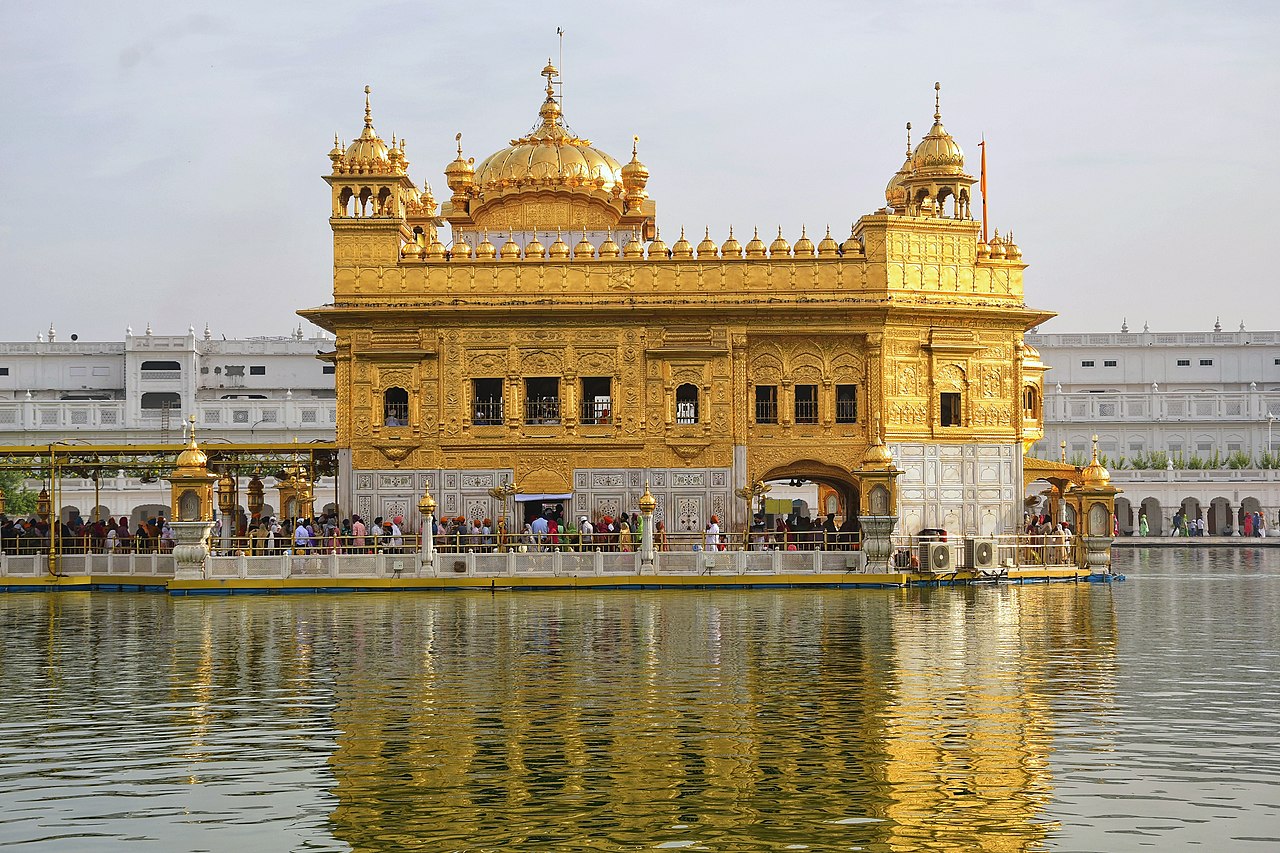
The Golden Temple, also known as Sri Harmandir Sahib or Darbar Sahib, is a stunning and deeply significant Sikh Gurdwara (place of worship) located in Amritsar, Punjab, India. It is considered the holiest shrine in Sikhism and attracts millions of devotees and visitors from around the world. Its history is intertwined with the evolution of Sikhism and the region’s historical events. Here’s an overview:
Founding and Early History
- Foundation by Guru Ram Das (1577):
- The city of Amritsar was founded by the fourth Sikh Guru, Guru Ram Das, in 1577. He excavated the holy tank (Amrit Sarovar) that surrounds the temple.
- The area was envisioned as a spiritual and community hub for Sikhs.
- Construction by Guru Arjan Dev (1581-1606):
- The fifth Sikh Guru, Guru Arjan Dev, oversaw the construction of the Harmandir Sahib.
- Unlike traditional temples, it was designed with four entrances, symbolizing openness and acceptance of all people, irrespective of caste, creed, or religion.
- Guru Arjan Dev installed the Adi Granth (the holy scripture of Sikhism, later expanded to become the Guru Granth Sahib) in the temple in 1604.
Mughal Era and Resilience
- Destruction and Rebuilding:
- The temple was attacked multiple times by Mughal forces and Afghan invaders during the 17th and 18th centuries, particularly by Ahmad Shah Durrani in 1762.
- Each time it was destroyed, the Sikh community rebuilt it with even greater determination.
Transformation into the Golden Temple
- Golden Embellishment (19th Century):
- During the reign of Maharaja Ranjit Singh, the Sikh ruler of the Punjab Empire, the temple underwent significant restoration and beautification.
- In 1830, the upper floors of the temple were gilded with gold and marble inlay work, giving it its iconic appearance and the name “Golden Temple.”
- Role as a Center of Sikh Authority:
- The temple became a central hub for Sikh spiritual and political authority, housing the Akal Takht (Throne of the Timeless One), established by Guru Hargobind in 1606. The Akal Takht serves as the highest seat of Sikh temporal authority.
20th Century to Present
- Partition of India (1947):
- During the partition, the Golden Temple remained in India, becoming a place of refuge and resilience for Sikhs during the tumultuous times.
- Operation Blue Star (1984):
- In June 1984, the Indian Army launched Operation Blue Star to remove Sikh militants who had fortified themselves in the temple complex. The operation caused significant damage to the temple and resulted in loss of life.
- The event deeply affected the Sikh community worldwide and remains a sensitive and controversial chapter in Indian history.
- Restoration and Continued Importance:
- The temple has since been restored and continues to be a symbol of Sikh spirituality, equality, and resilience.
- It is also known for its Langar (community kitchen), which provides free meals to thousands of people daily, regardless of their background.
Architectural Features
- The temple is a blend of Islamic and Indian architectural styles, featuring:
- Golden Dome: Made of gold-plated copper.
- Marble Work: Intricate marble inlays with floral and animal motifs.
- Amrit Sarovar: The holy water tank surrounding the temple, believed to have healing properties.
Significance Today
- The Golden Temple is not only a religious site but also a symbol of the Sikh ethos of humility, service, and universal brotherhood.
- It attracts millions of pilgrims and tourists annually, making it one of India’s most visited landmarks.





